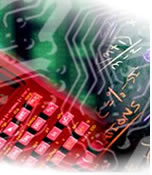British Court of Appeal reviews business method and software patents
 On October 27, the UK Court of Appeal handed down its judgment in two cases concerning the exclusions to patentability for business methods and computer programs under Article 52(2) and 52(3) of the EPC (s1(2) PA 1977), the first between Aerotel Ltd vs. Telco Holdings Ltd. cs. and the other in the matter of Application Neal William Macrossan.
On October 27, the UK Court of Appeal handed down its judgment in two cases concerning the exclusions to patentability for business methods and computer programs under Article 52(2) and 52(3) of the EPC (s1(2) PA 1977), the first between Aerotel Ltd vs. Telco Holdings Ltd. cs. and the other in the matter of Application Neal William Macrossan.
The hearing officer concluded that the claimed invention provided no “technical contribution” sufficient to take it outside the excluded categories, rather it “merely reduced cost, labor and error”. Mr. Macrossan appealed this decision to the High Court, where the case was considered by Mr. Justice Mann. Mann J’s only point of divergence from the decision in the Patent Office was his finding that the claimed invention was not excluded as a “method of doing business”, drawing a distinction between methods of carrying out business (excluded) and tools which might be used in a business (not excluded). He stated that “The activity involved in the invention is a business service, or end product, for which the customer is prepared to pay and for which the customer contracts…but that is not what the exclusion in the Act is aimed at, in my view”.
Since the decision of the hearing officer in March 2005, the decisions in CFPH LLC’s Application and Halliburton Energy Services Inc v Smith International (North Sea) Ltd [note] had been taken by some as having altered the approach to be taken by the Patent Office to the application of the exclusions, in particular by de-emphasizing the “technical contribution” element of the test. This approach had apparently been subsequently affirmed in Shoppalotto.com Ltd’s Application and Research in Motion (UK) Ltd v Inpro Licensing SARL.
The Court of Appeal decision
Nevertheless, even following such a clarification, given the EPO case law (however contradictory in approach) in our view it is unlikely that business methods will become patentable in Europe (as they are in the USA). And the patentability of software inventions in Europe is likely to remain debatable for some time.
Jeremy Morton, Simmons & Simmons, London, UK (see also Simmons IP news alert
[note: see also note Severin de Wit in publication in Dutch IP magazine IER ("Intellectuele Eigendom & Reclamerecht", with Dutch comments.


2 comments:
Nevertheless, even following such a clarification, given the EPO case law (however contradictory in approach) in our view it is unlikely that business methods will become patentable in Europe (as they are in the USA).
They already are to a certain extent. Someone looked at which US business methods (class 705) have a European equivalent and found quite a bunch of those.
Regarding -
'It is a judgment that appears to be tinged with regret ... because the Court was obliged to apply Merrill Lynch with its emphasis on “technical contribution”. It is apparent that the Court would have preferred to view technical contribution as inherent in the question, “does the contribution consist of excluded subject matter as such?”.',
hasn't, in fact, the Court of Appeal in Aerotel/Macrossan revived Falconer J's contribution approach in the Merrill Lynch High Court case (the very approach which the Court of Appeal previously expressly overrulled when the Merrill Lynch case reached the Court of Appeal)? ...
At paragraph 26(1) of the Court of Appeal Judgment, the Court gave the following summary of the "contribution approach" (and identified where it came from and how the Court of Appeal had itself previously expressly rejected it) –
"Ask whether the inventive step resides only in the contribution of excluded matter – if yes, Art.52(2) applies. This approach was supported by Falconer J in Merrill Lynch but expressly rejected by this Court."
Yet in adopting the Comptroller's suggested 4 step test (refer to paragraphs 41, 47 & 49 of the Court of Appeal Judgment), steps 2 and 3 of which are as follows –
"(2) identify the actual contribution;
(3) ask whether it falls solely within the excluded subject matter",
the Court of Appeal seems have to revived Falconer J's expressly rejected "contribution approach". And wouldn't a suggestion otherwise merely be an exercise in semantics?
Also, is this not unsurprising given the Court's apparent fondness for the "contribution approach" which it showed at paragraph 32 of the Court of Appeal Judgment when it said –
"What then of the first, the "contribution" approach? Were the question open for free decision now, we think there is a lot to be said for it."?
(The above is one of a number of commentaries about the Court of Appeal judgment which - now that the House of Lords has refused to grant me permission to appeal - I have posted at
http://www.ukcorporator.co.uk/patentappeal.php ).
Post a Comment